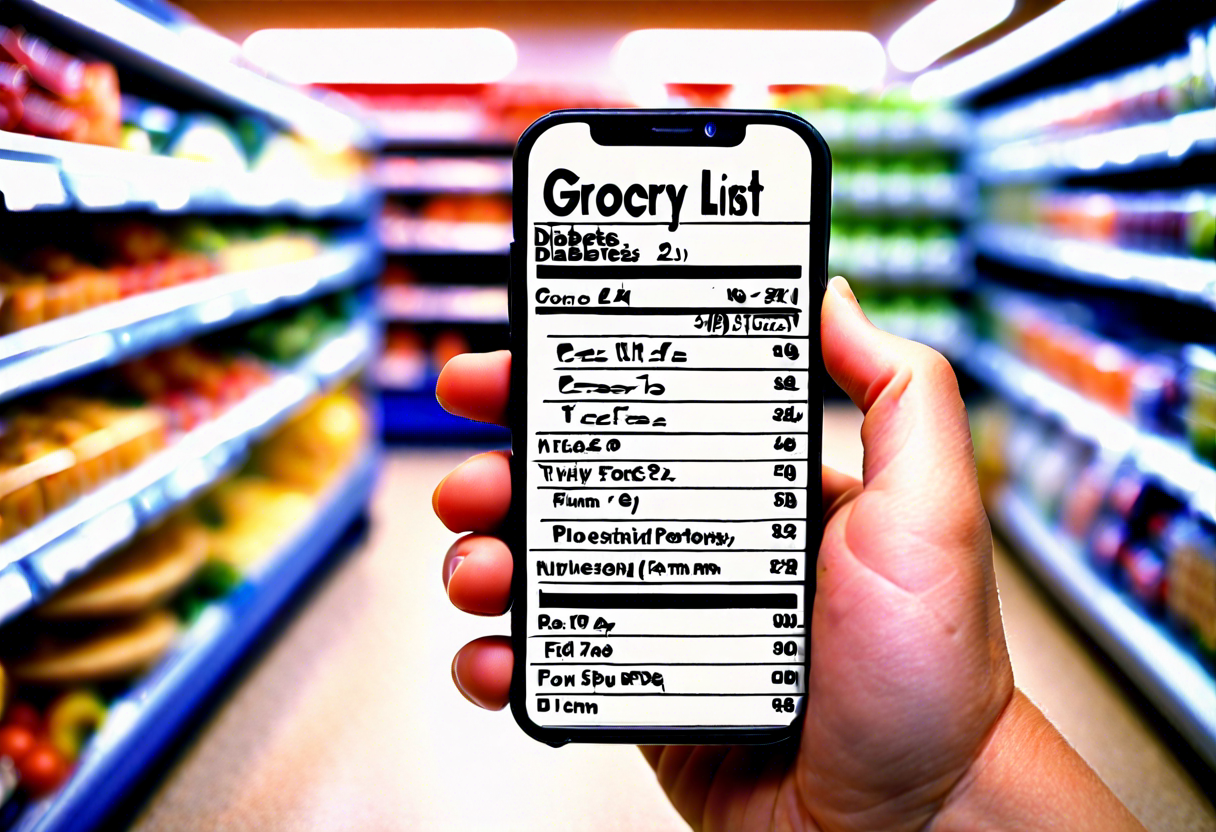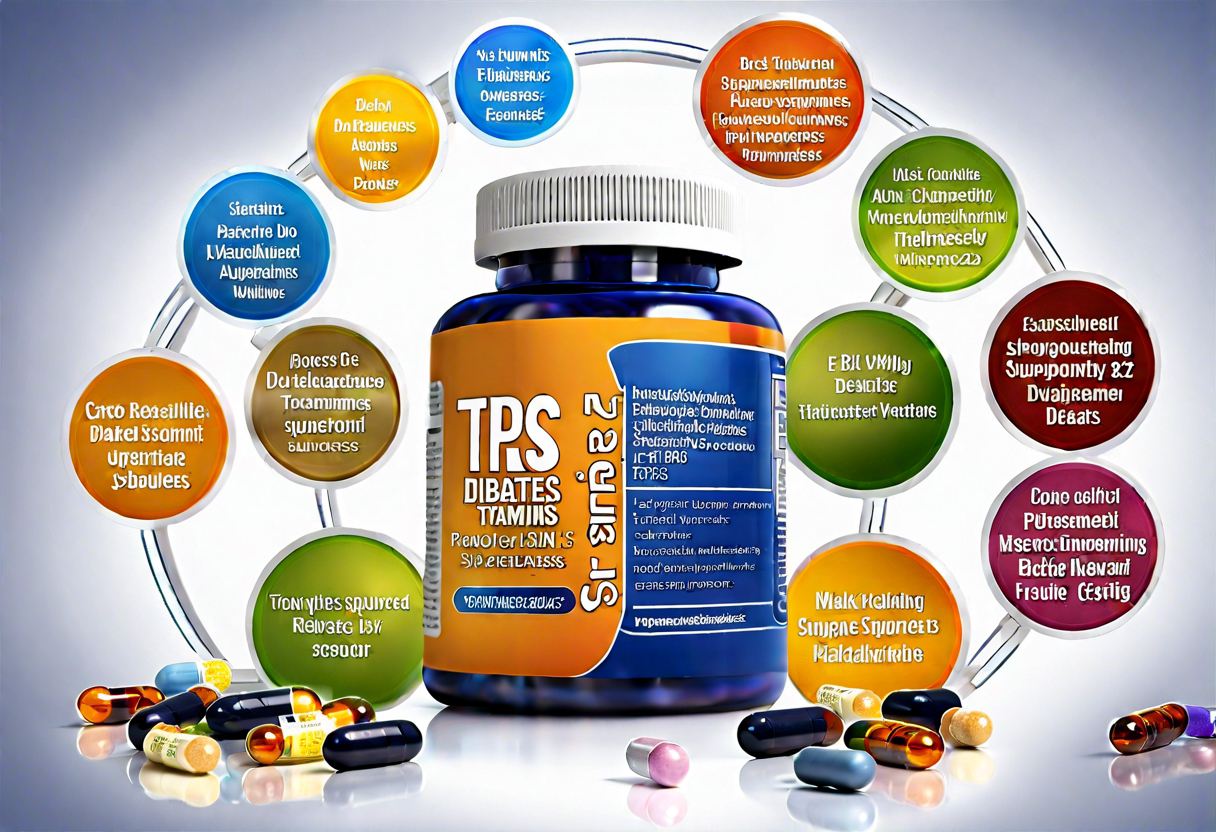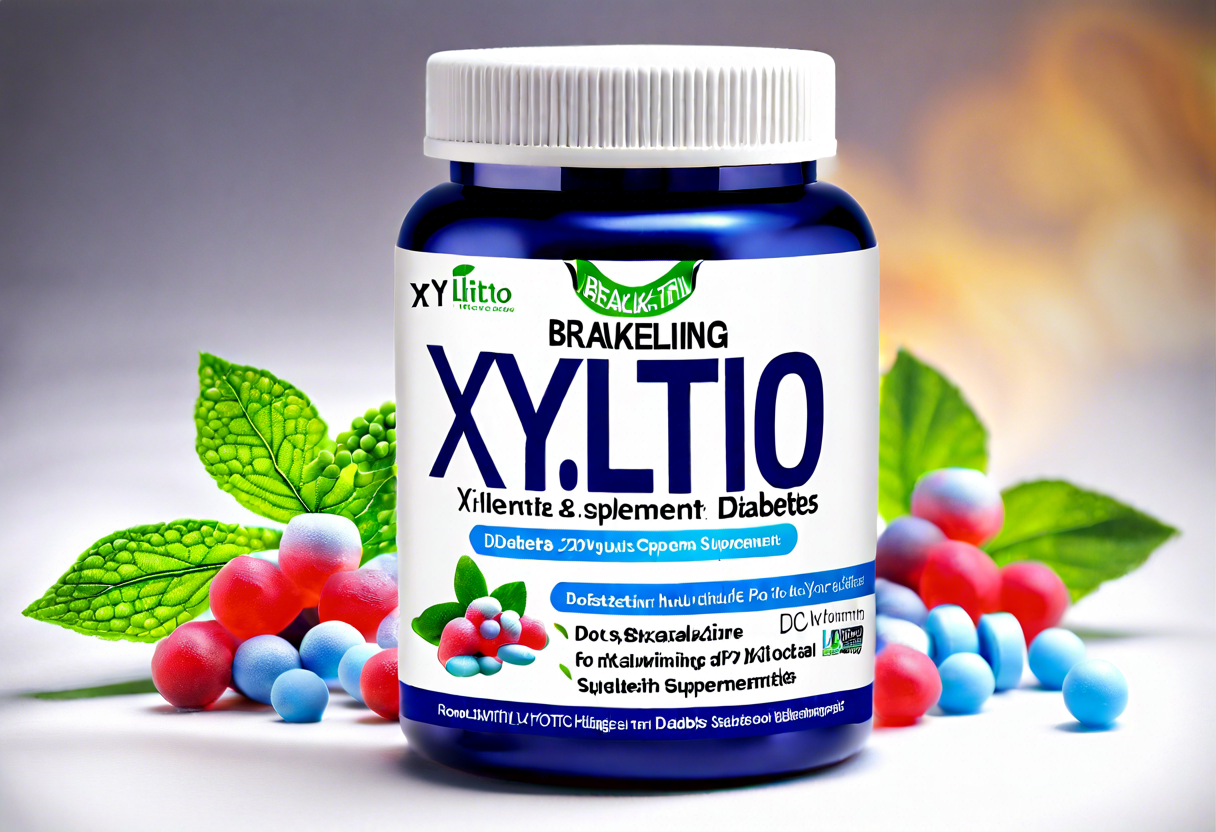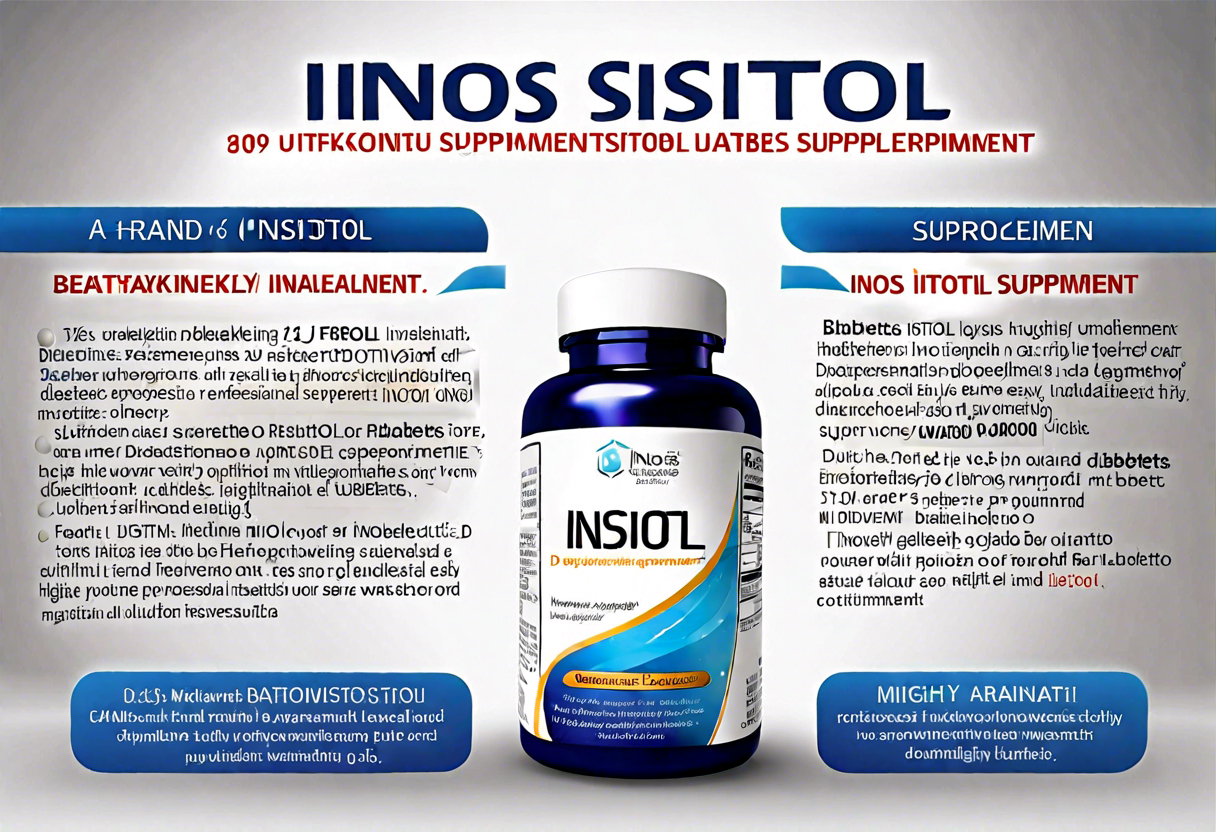Type 2 Diabetes Grocery Shopping List
When it comes to managing type 2 diabetes, maintaining a healthy diet is crucial. One of the key steps in implementing a healthy eating plan is creating a grocery shopping list that focuses on the right foods. By carefully selecting the items you purchase, you can ensure that your meals are well-balanced and supportive of your blood sugar control. Here is a comprehensive guide to help you build a robust type 2 diabetes grocery shopping list.
Whole Grains
Whole grains should form the foundation of your type 2 diabetes grocery shopping list. These grains are high in fiber and nutrients, making them a better choice than refined grains. Look for items such as whole wheat bread, brown rice, quinoa, and whole grain pasta. These options provide sustained energy release and assist in managing blood sugar levels.
Choosing Lean Protein
Protein is an essential nutrient for individuals with type 2 diabetes as it helps regulate blood sugar and promotes satiety. Opt for lean sources of protein, such as skinless poultry, fish, tofu, and legumes. These options are low in saturated fat and cholesterol, making them heart-healthy choices.
Embracing Healthy Fats
Contrary to popular belief, not all fats are bad. Healthy fats, such as monounsaturated and polyunsaturated fats, can help improve insulin sensitivity and reduce the risk of heart disease. Include foods like avocados, nuts, seeds, and olive oil in your shopping list to incorporate these beneficial fats into your diet.
Load Up on Fresh Produce
Fruits and vegetables are essential components of a type 2 diabetes grocery shopping list. These nutrient-dense foods are low in calories and high in fiber, helping to control blood sugar levels and promote overall health. Aim for a variety of colorful options to ensure you receive a wide range of vitamins and minerals.
Be Mindful of Dairy Products
Dairy products can be part of a type 2 diabetes-friendly diet if chosen wisely. Opt for low-fat or non-fat options like skim milk, Greek yogurt, and cottage cheese. These choices provide protein and calcium while keeping your saturated fat intake in check.
Don’t Forget Hydration
Staying hydrated is essential for everyone, but it holds particular importance for individuals with type 2 diabetes. Include water, unsweetened herbal tea, and low-sugar beverages on your grocery shopping list to ensure you stay properly hydrated throughout the day.
By using this type 2 diabetes grocery shopping list as a guide, you can ensure that your meals are geared towards optimal blood sugar control and overall health. Remember to read food labels, watch portion sizes, and create balanced meals that incorporate a variety of these healthy choices.
Essential Foods to Include in a Type 2 Diabetes Grocery Shopping List
Type 2 diabetes is a chronic condition that requires careful management of one’s diet. When creating a grocery shopping list for type 2 diabetes, it is essential to choose foods that help control blood sugar levels and promote overall health. To make sure your shopping cart is filled with nutrient-dense options, here are some essential foods to include in your type 2 diabetes grocery shopping list:
-
Fresh Vegetables: a variety of non-starchy vegetables into your diet is crucial for managing type 2 diabetes. These include leafy greens like spinach and kale, as well as broccoli, cauliflower, peppers, and zucchini. Vegetables are low in calories and high in fiber, which helps regulate blood sugar levels and improve satiety.
-
Lean Proteins: Opting for lean sources of protein is key to maintaining stable blood sugar levels. Foods such as skinless poultry, fish, tofu, and legumes (like beans and lentils) are excellent choices. These protein sources are low in saturated fat and rich in essential nutrients like iron and zinc.
-
Whole Grains: Unlike refined grains, whole grains retain their fiber, vitamins, and minerals. Including whole grains in your shopping list can provide important nutrients while keeping blood sugar levels steady. Opt for options like oats, quinoa, whole wheat bread, and brown rice.
-
Healthy Fats: While it is important to limit saturated and trans fats, including healthy fats in your diet can have significant benefits. Foods such as avocados, nuts, seeds, and olive oil are excellent sources of monounsaturated and polyunsaturated fats, which can help improve cholesterol levels and reduce the risk of heart disease.
-
Low-Fat Dairy Products: When choosing dairy products, opt for low-fat or fat-free options. This includes items like skim milk, yogurt, and cottage cheese. These foods provide essential nutrients like calcium and protein without the additional saturated fats found in full-fat dairy products.
-
Berries and Fresh Fruits: While fruits do contain natural sugars, they also provide an array of vitamins, minerals, and fiber. Berries, such as strawberries, blueberries, and raspberries, are especially high in antioxidants and have a lower glycemic index compared to other fruits. Aim to incorporate a variety of fruits in moderation into your grocery shopping list.
-
Healthy Snacks: It’s important to have healthy snack options on hand to avoid reaching for processed and sugary foods. Include items like unsalted nuts, seeds, low-sugar protein bars, and Greek yogurt to satisfy your hunger between meals.
Remember to check food labels and choose products with minimal added sugars, sodium, and unhealthy fats. It’s also beneficial to plan your meals and snacks in advance, making it easier to maintain a nutritious diet. By incorporating these essential foods into your type 2 diabetes grocery shopping list, you’ll be well on your way to managing your condition and maintaining overall good health.
Creating a Healthy Meal Plan for Type 2 Diabetes
When you have type 2 diabetes, maintaining a healthy diet is crucial for managing your blood sugar levels. A well-planned meal plan can help you achieve this goal. By including a variety of nutrient-dense foods in your diet, you can ensure that your body receives all the necessary nutrients while keeping your blood sugar under control. Here are some tips to help you create a healthy meal plan for type 2 diabetes.
1. Focus on Complex Carbohydrates: Incorporate whole grains like brown rice, quinoa, and whole wheat bread into your diet. These foods are rich in fiber, which can help regulate blood sugar levels and provide a steady release of energy throughout the day. Avoid refined carbohydrates like white bread, pasta, and sugary snacks, as they can cause spikes in blood sugar.
2. Include Lean Protein Sources: Protein is essential for maintaining muscle mass and promoting satiety. Opt for lean protein sources like skinless chicken, fish, tofu, and legumes. These foods are low in saturated fat and can help prevent weight gain, a common risk factor for type 2 diabetes.
3. Embrace Healthy Fats: Incorporate healthy fats into your diet, such as avocados, nuts, seeds, and olive oil. These fats can help improve insulin sensitivity and promote heart health. However, moderation is key, as fats are calorie-dense. Be mindful of portion sizes to maintain a balanced diet.
4. Load Up on Non-Starchy Vegetables: Non-starchy vegetables, such as leafy greens, broccoli, cauliflower, and peppers, are packed with vitamins, minerals, and fiber. They have a minimal impact on blood sugar levels and can provide a feeling of fullness without adding excessive calories. Aim to fill half your plate with non-starchy vegetables at each meal.
5. Monitor Portion Sizes: Portion control plays a crucial role in managing blood sugar levels. Use measuring cups or a food scale to ensure you are consuming appropriate portions of each food group. Overeating, even with healthy foods, can lead to elevated blood sugar levels and weight gain.
6. Stay Hydrated: Drink plenty of water throughout the day to stay hydrated. Water can help control appetite, maintain proper bodily functions, and support overall health. Avoid sugary beverages, such as soda and fruit juices, as they can lead to blood sugar spikes.
7. Plan Ahead and Make a Shopping List: Before heading to the grocery store, plan your meals for the week and create a shopping list. This will help you stay focused and avoid buying unhealthy food choices. Stick to the outer aisles of the grocery store, where you’ll find fresh produce, lean proteins, and whole grains.
8. Seek Professional Guidance: If you’re struggling to create a meal plan that suits your needs, consider consulting a registered dietitian. They can provide personalized guidance, help you navigate food choices, and tailor a meal plan specific to your dietary preferences and diabetes management goals.
By following these tips, you can create a healthy meal plan for type 2 diabetes that supports your overall well-being and helps you maintain stable blood sugar levels. Remember, consistency and moderation are key in managing your diabetes and promoting a healthy lifestyle.
Smart Grocery Shopping Strategies for Managing Type 2 Diabetes
When you have type 2 diabetes, grocery shopping plays a crucial role in managing your condition and maintaining a healthy lifestyle. By making smart choices at the supermarket, you can ensure that your pantry is stocked with nutritious foods that keep your blood sugar levels in check. Here are some strategies to help you navigate the aisles and make the best choices for your health.
-
Plan Ahead: Before heading to the grocery store, take the time to plan your meals for the week. This will not only save you time but also help you make healthier choices. Create a shopping list based on the meals you have planned, including fresh fruits, vegetables, lean proteins, whole grains, and low-fat dairy products.
-
Read Food Labels: When shopping for packaged foods, it’s important to read the labels carefully. Look for items that are low in sugar, sodium, and saturated fats. Pay attention to the serving size and the total carbohydrate content, as these are crucial factors for managing diabetes. Choose products with high fiber content, as fiber can help regulate blood sugar levels.
-
Shop the Perimeter: The perimeter of the grocery store is where you’ll find fresh produce, lean meats, and low-fat dairy products. These are the foundation of a healthy diet for individuals with type 2 diabetes. Fill your cart with colorful fruits and vegetables, such as leafy greens, berries, and citrus fruits. Opt for lean proteins like poultry, fish, and tofu, and choose low-fat dairy options like skim milk or Greek yogurt.
-
Limit Processed Foods: Processed foods are often high in added sugars, unhealthy fats, and sodium. These can have a negative impact on your blood sugar levels and overall health. When possible, opt for whole, unprocessed foods. For example, choose whole grains like quinoa or brown rice instead of refined grains like white bread or pasta.
-
Stock Up on Healthy Snacks: It’s essential to have healthy snack options on hand, especially when managing type 2 diabetes. Instead of reaching for sugary or salty snacks, choose options like fresh fruits, vegetables with hummus, unsalted nuts, or Greek yogurt. These snacks are nutritious and can help stabilize your blood sugar levels throughout the day.
-
Don’t Shop on an Empty Stomach: Shopping when hungry can lead to impulsive food choices and overeating. To avoid this, have a light, balanced meal or snack before heading to the supermarket. This will help you make better decisions and resist the temptation to buy unhealthy foods.
-
Choose Sugar-Free and Low-Carb Options: Many food products now offer sugar-free or low-carb alternatives. These options can be beneficial for individuals with type 2 diabetes as they help reduce sugar intake and minimize blood sugar spikes. Look for sugar-free beverages, condiments with no added sugars, and low-carb snacks or desserts.
By following these smart grocery shopping strategies, you can take control of your type 2 diabetes management and make healthier food choices. Remember, it’s not just about what you eat but also how you shop. With a well-planned shopping list and a mindful approach to food labels, you can build a diabetes-friendly pantry that supports your overall health and well-being.
Smart Grocery Shopping Strategies for Managing Type 2 Diabetes
Maintaining a healthy diet is crucial for managing type 2 diabetes. One of the most effective ways to ensure you are making wise food choices is by having a smart grocery shopping strategy in place. By carefully selecting the right foods and avoiding common pitfalls, you can create a well-balanced type 2 diabetes grocery shopping list that supports your health goals. Here are some tips to help you make the best choices when grocery shopping.
-
Plan Ahead: Before heading to the grocery store, take the time to plan your meals and snacks for the week. This will help you avoid impulse purchases and ensure you have the necessary ingredients to prepare nutritious meals. Create a shopping list based on your meal plan and stick to it when you shop. This will prevent you from buying unnecessary items that may not align with your health goals.
-
Fill Your Cart with Fresh Produce: Make fruits and vegetables the cornerstone of your type 2 diabetes grocery shopping list. These are rich in important nutrients, high in fiber, and low in calories. Aim for a rainbow of colors to ensure you are getting a variety of vitamins and minerals. Opt for fresh produce whenever possible, but frozen and canned options without added sugars or preservatives can be good alternatives.
-
Choose Whole Grains: Whole grains are an important source of fiber and nutrients. When shopping for bread, rice, pasta, and cereals, look for whole grain or whole wheat options. Be mindful of portion sizes to manage your carbohydrate intake effectively.
-
Select Lean Proteins: Include lean proteins in your type 2 diabetes grocery shopping list to provide essential amino acids without adding excessive fat or cholesterol. Great choices include skinless poultry, fish, beans, lentils, and tofu. Limit or avoid processed meats, which may contain added sugars or unhealthy fats.
-
Read Food Labels: When shopping for packaged foods, take the time to read the nutrition labels carefully. Pay attention to the total amount of carbohydrates, added sugars, sodium, and unhealthy fats. Aim for foods with lower sodium and sugar content and avoid those with unhealthy trans fats.
-
Be Wary of Sneaky Sugars: Sugar can hide in many packaged foods, even those labeled as "healthy" or "low-fat." Look out for ingredients like high fructose corn syrup, maltose, dextrose, and sucrose. Opt for naturally sweet foods like fresh fruits instead of sugary snacks and desserts.
-
Stock Up on Healthy Fats: Not all fats are created equal. Incorporate foods rich in healthy fats such as avocados, nuts, olive oil, and fatty fish like salmon into your diet. These fats can help improve heart health and regulate blood sugar levels.
-
Avoid Processed and Packaged Foods: Processed and packaged foods often contain additives, high levels of sodium, unhealthy fats, and added sugars. These can have a negative impact on your blood sugar control and overall health. Opt for whole, unprocessed foods whenever possible.
By following these smart grocery shopping strategies, you can create a type 2 diabetes grocery shopping list that promotes better blood sugar control and overall well-being. Remember, planning ahead, reading labels, and focusing on fresh, whole foods are key to managing your diabetes effectively. With a little effort and attention, your grocery shopping trips can become an important part of your diabetes management routine.
Conclusion
A well-rounded type 2 diabetes grocery shopping list is crucial for managing blood sugar levels and overall health. By including essential foods such as fresh vegetables, lean proteins, whole grains, and healthy fats, individuals with type 2 diabetes can create a balanced and nutritious meal plan. It is also important to plan meals in advance to ensure that all necessary ingredients are available and to avoid impulsive food choices. Smart grocery shopping strategies, such as reading food labels, shopping the perimeter of the store, and avoiding processed and sugary foods, can further support a healthy eating routine. Additionally, being aware of common pitfalls, such as overbuying or falling for marketing gimmicks, can help individuals with type 2 diabetes make informed decisions while grocery shopping.
A type 2 diabetes grocery shopping list should prioritize fresh fruits and vegetables. These nutrient-rich foods provide essential vitamins, minerals, and fiber while being low in calories and carbohydrates. Opt for a variety of colorful vegetables, including leafy greens, broccoli, peppers, and carrots. Fruits like berries, apples, and citrus fruits can satisfy a sweet tooth without causing significant blood sugar spikes. It is also important to include whole grains, such as brown rice, quinoa, and whole wheat bread, which are high in fiber and help regulate blood sugar levels.
Lean proteins should be a staple on a type 2 diabetes grocery shopping list. Choose sources like skinless poultry, fish, tofu, and legumes. These protein-rich foods can be cooked in a variety of ways, adding flavor and satiety to meals. Healthy fats, such as avocados, nuts, and olive oil, should also be included to support heart health and provide a feeling of fullness.
Creating a healthy meal plan for type 2 diabetes involves careful planning. Start by outlining meals and snacks for the week, incorporating a balance of carbohydrates, proteins, and fats. Use the type 2 diabetes grocery shopping list as a guide to ensure all necessary ingredients are available. By preparing meals at home, individuals can have better control over portion sizes and the quality of ingredients used.
When it comes to grocery shopping, there are a few strategies that can help manage type 2 diabetes. Firstly, read food labels carefully to understand the nutritional content and ingredient list of products. Avoid foods high in added sugars, saturated fats, and sodium. Secondly, focus on shopping the perimeter of the store, where fresh produce, lean proteins, and dairy products are typically located. This can help avoid the temptation of processed and unhealthy foods stocked in the center aisles. be cautious of marketing gimmicks and claims on packaging. Often, products marketed as "diabetic-friendly" or "sugar-free" may still contain hidden sugars or unhealthy additives. Always refer to the ingredient list and nutritional facts to make informed choices.
While grocery shopping, it is essential to avoid common pitfalls. One common trap is overbuying perishable foods that may go to waste. Plan meals and quantities in advance to prevent food spoilage. Additionally, be aware of portion sizes and avoid buying items in bulk if they may lead to overconsumption. Stay mindful of budget constraints and prioritize whole, nutritious foods over processed or convenience options.
Creating a type 2 diabetes grocery shopping list that includes essential foods like fresh produce, lean proteins, whole grains, and healthy fats is vital for managing blood sugar levels and overall well-being. By following smart grocery shopping strategies and avoiding common pitfalls, individuals with type 2 diabetes can make informed choices and maintain a nutritious meal plan that supports their health goals.









